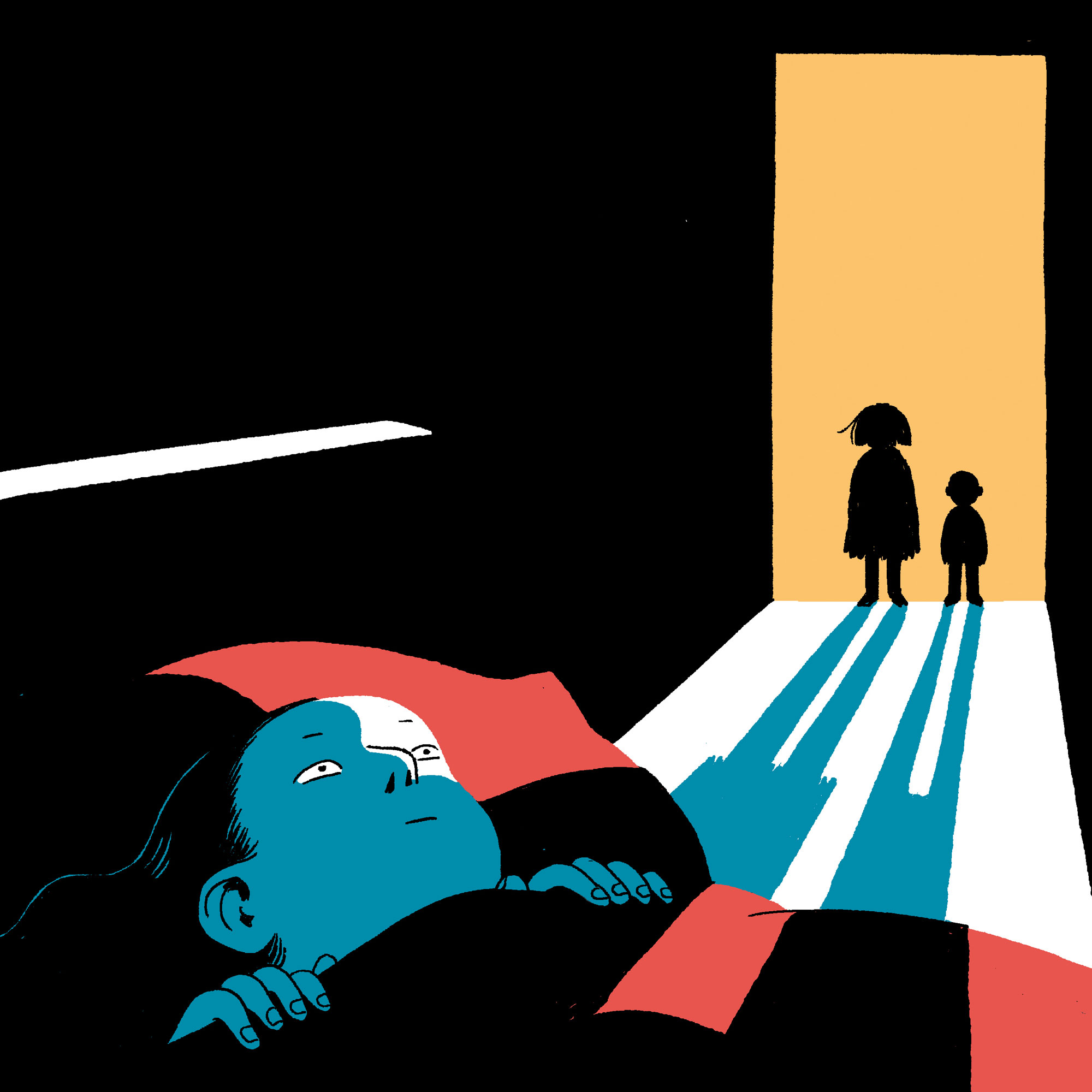Dose of advice Dose of advice Dose of advice
Melatonin, an unregulated and untested supplement, is gaining popularity with parents and caregivers.
By Shin Yu Pai | Illustration by Eleanor Davis | June 2024 issue

Pediatrician Cora Breuner sees a revolving door of sleep-deprived parents looking for help getting their kids to fall and stay asleep. They try everything from blue light filters and blackout curtains to herbal remedies and, more recently, melatonin gummies, she says. Because melatonin is sold over the counter and packaged as a natural solution available in varying dosages, many adults assume it’s safe for children. Breuner emphasizes that it’s not.
“I don’t know how this can happen when we’re so careful about what we put in our bodies,” says Breuner, a fellow of the American Academy of Pediatrics and professor at the UW School of Medicine. “We teach our families to provide healthy foods for our kids and ensure that they are in car seats and wearing seat belts. To pivot to use of melatonin without clear regulation on safe production, consistent potency and lack of contamination, and without data on efficacy or its long-term effects, doesn’t make sense.”
Last month, a teacher at a Seattle childcare center admitted using melatonin gummies to sedate at least four young children in her care, according to the state Department of Children, Youth and Families. The teacher lost her job, and the school was investigated by Child Protective Services. A day care director Indiana was recently sentenced to six months in jail for doling out the sleep aid at nap time without parental consent. Some of the parents reported side effects in their children, including fatigue, skin rash and mood changes.
Melatonin found popularity as an adult sleep aid in the early 1980s when a research study showed it helped travelers recover from jet lag. “People started to scratch their heads and realized they could try to reset their circadian clock,” says Breuner. “It’s related to chronobiotic properties of melatonin. Our pineal gland secretes it, and it touches our receptors and allows us to fall asleep. The secretions [our bodies make] depend on light.” Melatonin is a hormone that works through the endocrine system. The long- and short-term effects are unknown.
The pharmaceutical industry first mass-produced melatonin from bovine pineal glands and later turned to deriving synthetic melatonin from compounds. It is made quickly and cheaply in all kinds of doses, without strict FDA regulation or oversight. The label may or may not accurately describe what’s in the product, says Breuner, adding, “I wish they’d take the word ‘natural’ out. It means it doesn’t have significant oversight by FDA.”
It’s easy for parents to blame themselves or think something is wrong with their children when their children can’t fall asleep. “I spend a lot of time trying to teach parents compassion and self-forgiveness,” Breuner says. “I ask my parents and caregivers to be honest about the dosages they are giving to their kids, without shame. The first thing I say is let’s not punish ourselves: We really need to get your kid off this and come up with some other strategy.”
Her initial advice to parents and caregivers with challenges around bedtime is to evaluate sleep hygiene methods. Set up routines and model good behaviors like having a fixed bedtime and using technology less. If a child insists on having a mobile device to listen to music, switch out the smartphone for an iPod. If they insist on having a device to wake them up in the morning with an alarm, use an old-fashioned alarm clock.
“It’s important to talk about the fact that learning to fall and stay asleep can be hard,” Breuner says. “Our society needs to focus on how to naturally obtain more restful and refreshing sleep, without medication.”